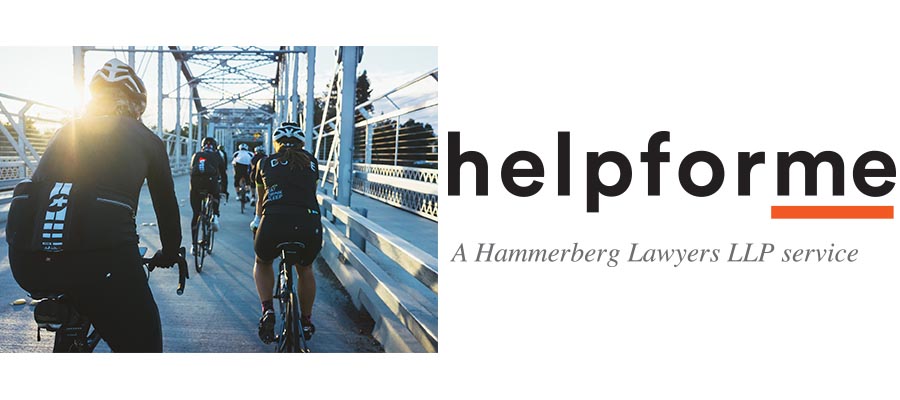Prepare your bike. Protect your body.

Written by Joel Zannata
The RBC GranFondo Whistler is an epic ride. We’re all heading up to take in the views, be part of nature and…who am I kidding? Yes, it’s a stunning event from start to finish and that’s part of the pull, but I think we can all agree we’re also in it for the personal challenge.
I want to be at my best and I’m sure you do too. So, don’t just get yourself in great shape, get your bike optimized too. For maximum performance, your body needs minimum strain to avoid injuries. This includes customizing your bike to suit your particular dimensions.
In my work, I see far too many injuries. My hope with this and my other blogs, is to highlight ways in which you can ride safely. Hope these suggestions help.
Saddle Height
If you tend to get knee pain, there’s a good chance your saddle height is off. Saddle height is determined by the angle of the knee at full extension. For guys, it’s close to 141°. For women it’s usually about 1° to 2° higher because they tend to have looser hamstrings.
To determine the right height, just sit on your bike, unclip, put your heel in the middle of the pedal axle. Run the pedal down as far as it can go. At that point, your leg should be fully extended, hamstring and calf both, without any drop in the hip – that part is important. If your hip drops, the saddle is too high.
Most of us can reach the pedal, but then our hip drops [this means the saddle is too high]. Hips have to be neutral.
When you clip back in, the angle of your foot should create the right angle at the knee.
Mind you, many of us have tight hamstrings (I sure do), which impede a full extension. In that case, 140° and lower might be better for you.
Remember there’s more to setting saddle height than just knee angles. There are a number of details to consider from knee minimum angles and ankle postures to how your hips move and to your history of injuries.
Saddle Set Back
I use the Knee Over Pedal Spindle (KOPS) rule to figure out the saddle fore-aft position. By that I mean, I hang a plumb-bob from that bony bump below the kneecap. You want it to pass through the pedal spindle – knee cap to be positioned just over the centre pedal – when placed at 3 o’clock.
Keep in mind though, if your saddle height is off, the knee will be too far forward or back.
Still, it helps determine hip position relative to the seat tube axis. If your hip joint is along this axis, then you’ll be pretty well balanced and you won’t need to put much weight on your hands.
Crank Lengths
Others might disagree, but to me crank lengths should correspond to leg length. Even if you’re short, there’s just no real downside. Yet, if your cranks are too long, then joints of the hips, knees and ankles can be stressed to the point of injury.
Handlebar Reach
Handlebar reach is the distance between saddle and handlebars. Easy, right? Okay, not really. In actual fact, it entails a number of aspects – torso angle, and shoulder, elbow and wrist postures, not to mention the grip of the hands on hoods or drops.
Torso hoods are usually 40° and 50°. A lower position is more aerodynamic, but requires fairly good flexibility. With over 122 km of varying terrain, I prefer a more relaxed torso angle because it takes pressure off the lower back, hamstrings and neck.
Your hands should fall naturally on to the hoods, a slight bend at the elbows and shoulder relaxed. This will typically give an upper arm to torso angle of 85° to 90°. The hoods should be adjusted to give a neutral wrist posture. Drops should be high enough to access on pretty much any terrain.
Foot to Pedal
Your cleats should ensure that the ball of the foot is over the pedal spindle. They should work with the natural toe, whether in or out of the foot. There are very few problems associated to cleats being too far back. However, too far forward can create a ‘toe down’ posture causing numbness and ‘Hotfoot’.
Stay safe and stay strong.
By optimizing your bike for comfort, you lower the risk of stress on your body, prevent injuries and be stronger through the course of the ride.
I spend a lot of my life helping people who’ve been injured. If you’re ever in need of personal legal services, including personal injury law, I suggest you have a look at Helpforme. It’s been created by Hammerberg Lawyers to make our nearly 20 years experience of helping people more accessible. With it, we get to work more closely with you to empower you when you need it most.
This year, Helpforme is an official sponsor of RBC’s GranFondo Whistler. Check here for more insights on how to prevent injuries on your way to a great finish.
Joel Zanatta
Helpforme Personal Legal Services
[email protected]
